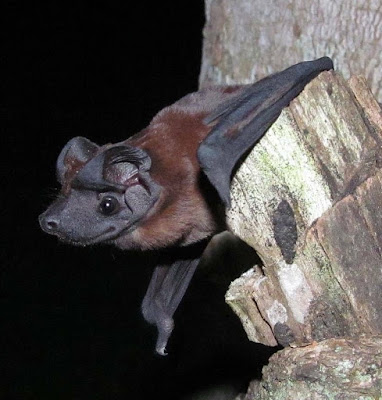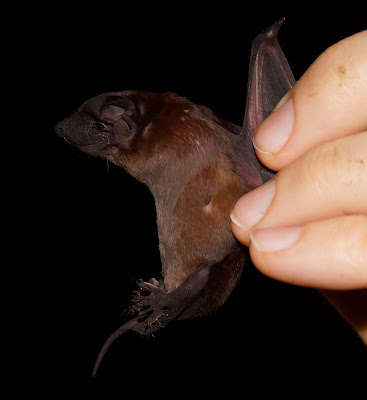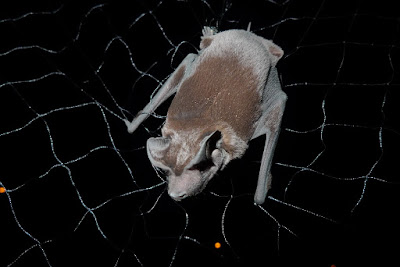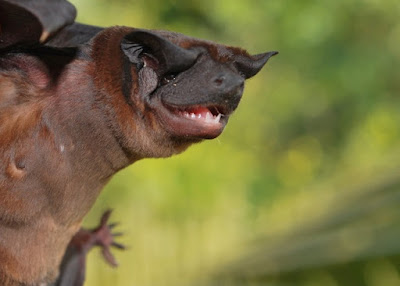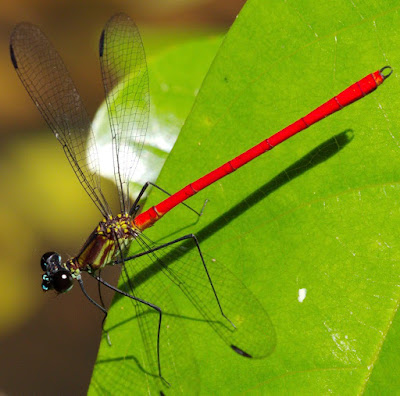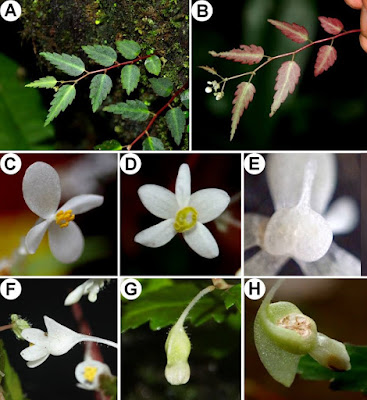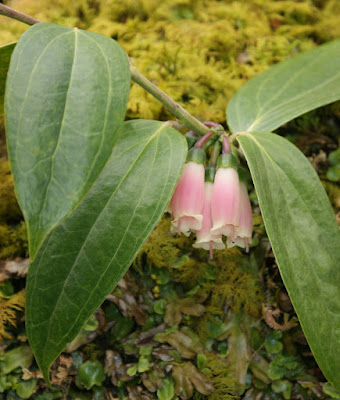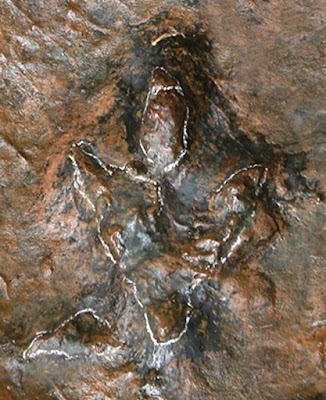[Most Recent Entries] [Calendar View]
Friday, January 19th, 2018
| Time | Event | ||||
| 2:03a | [Mammalogy • 2018] Uncovering the Diversity of Dog-faced Bats from the Genus Cynomops (Chiroptera: Molossidae), with the Redescription of C. milleri and the Description of Two New Species; Cynomops freemani & C. tonkigui
Abstract Until recently the genus Cynomops (Chiroptera: Molossidae) comprised six species of fast flying, aerial insectivorous bats distributed throughout the Neotropics. However, our revisionary study have shown that the diversity of this taxon was underestimated as molecular and morphological data supported the recognition of C. milleri as a full species and revealed two previously unrecognized, small species of Cynomops. These newly recognized taxa are Cynomops freemani sp. nov. from the Canal Zone region, Panama, sister taxon to C. mexicanus, and Cynomops tonkigui sp. nov. from the eastern Andes of Ecuador and Colombia, sister taxon of C. milleri. We also describe the calls of Cynomops freemani sp. nov. that may be useful for the recognition of these species during field inventories based on ultrasonic recording techniques. We elevate the currently known diversity of Cynomops to eight species, as we also revalidate C. milleri providing an emended diagnosis and a redescription of this taxon. Keywords: Free-tailed bats, taxonomy, acoustic identification, Cynomops freemani sp. nov, Cynomops tonkigui sp. nov Systematics Family Molossidae Gervais 1856 Genus Cynomops Thomas 1920 Cynomops milleri (Osgood, 1914) Miller’s Dog-faced Bat
Cynomops freemani, new species Freeman’s Dog-faced Bat ETYMOLOGY: The name “freemani” is in honor to Dr. Patricia W. Freeman in recognition of her influential contributions to the study of the morphology, systematics, and evolutionary relationships of molossid bats (e.g. Freeman, 1981). DISTRIBUTION: Cynomops freemani is known from lowlands (23–53 m a.s.l.) of the Pacific coast of the Canal Zone region in Panama (Fig. 3). Cynomops tonkigui, new species Waorani Dog-faced Bat ETYMOLOGY: The name “tonkigui” is used as a noun in apposition, and means "bat" in the Waorani language. The name honors the Waorani people who inhabit the type locality (Tirira, 2012) DISTRIBUTION: Cynomops tonkigui is known from the lowlands (195–529 m a.s.l.) of northeastern South America, and the eastern slopes of the Andes in Ecuador and Colombia (Fig. 3). Ligiane M. Moras, Renato Gregorin, Thomas Sattler and Valéria da C. Tavares. 2018. Uncovering the Diversity of Dog-faced Bats from the Genus Cynomops (Chiroptera: Molossidae), with the Redescription of C. milleri and the Description of Two New Species. Mammalian Biology. In Press. DOI: 10.1016/j.mambio.2017.12.005 Two New Dog-Faced Bat Species Discovered in Panama and Ecuador newsdesk.si.edu/releases/two-new-dog-fac More sky puppies! Scientists discover two new species of dog-faced bat insider.si.edu/2018/01/sky-puppies-scien | ||||
| 11:39a | [Entomology • 2018] Description of the Female of Dicterias atrosanguinea Selys 1853 (Odonata: Dicteriadidae), with Notes on Male Genital Ligula and Male Behavior
Abstract The female of Dicterias atrosanguinea Selys, 1853 is described and illustrated based on two specimens collected in Pará and Amazonas States, Brazil. We compare the female with the most closely related species, Heliocharis amazona Selys, 1853, and present SEM images of the genital ligula for both D. atrosanguinea and H. amazona males. Additionally we provide behavioral observations on D. atrosanguinea males. Keywords: Odonata, damselfly, female description, genital ligula, Brazil, Amazon, Dicteriadidae Diogo Silva Vilela, Rhainer Guillermo-Ferreira and Adolfo Cordero-Rivera. 2018. Description of the Female of Dicterias atrosanguinea Selys 1853, with Notes on Male Genital Ligula and Male Behavior (Odonata: Dicteriadidae). Zootaxa. 4374(3); 441–450. DOI: 10.11646/zootaxa.4374.3.7 | ||||
| 12:03p | [Botany • 2018] Begonia namkadingensis • A New Species (Begoniaceae) in Limestone Area [Flora of Nam Kading National Protected Area III]
Abstract A new species of Begonia (Begoniaceae), Begonia namkadingensis, is described. This species was collected on moist mossy limestone rocks in the Nam Kading National Protected Area in central Laos during our field survey in 2017. The species resembles B. pteridiformis, which is endemic to Peninsular Thailand, but can be distinguished by its smaller habit, fewer and smaller leaves, less hairy stems and leaves, narrower inner dorsal tepal of pistillate flowers, fewer stamens, and smaller fruits. Keywords: DNA barcoding, flora, Laos, new species, sect. Lauchea, sect. Parvibegonia, taxonomy, Eudicots Chen-Jui Yang, Shuichiro Tagane, Phetlasy Souladeth, Norikazu Okabe, Jer-Ming Hu and Tetsukazu Yahara. 2018. Flora of Nam Kading National Protected Area III: Begonia namkadingensis (Begoniaceae), A New Species in Limestone Area. Phytotaxa. 334(2); 195-199. DOI: 10.11646/phytotaxa.334.2.8 ຕີພິມແລ້ວ, ພືດຊະນິດໃໝ່ຂອງໂລກ ຈາກປ່າສະຫງວນນໍ້າກະດິງ! ສົ້ມກົບນໍ້າກະດິງ (ຊື່ລາວ) ຫຼື Begonia namkadingensis C.-J. Yang, Souladeth & Tagane ຕະກຸນ Begoniaceae (2018) Phytotaxa 334(2) | ||||
| 12:32p | [Botany • 2017] Dimorphanthera wickendeniana • A New Species (Ericaceae) from Papua, Indonesian New Guinea
ABSTRACT A new species of Dimorphanthera is described and figured. Collected in 1993 from Indonesian New Guinea (Papua) by the late Michael Wickenden, this plant is distinct in the unique combination of characters that it possesses.
Dimorphanthera wickendeniana Argent species nova Diagnosis: Distinct in the combination of characters: densely patently hairy stems; leaves with minutely crenulate margins; 3–5 pli-nerved venation; fasciculate inflorescences lacking a rhachis; laxly hairy corollas and a glabrous disk. Ecology: Collected in the Lake Habbema region which is a sub-montane area with a mixture of open Papuacedrus forest and ericaceous shrubbery interspersed with open grassy areas at about 3,500m altitude. This plant was described as a tall shrub but would probably have been growing at a shrubbery margin. In cultivation it is a sprawling shrub. Etymology: Named after the late Michael Wickenden, collector of this plant, horticulturist and naturalist who collected many rare and interesting plants for his plant nursery at Gatehouse of Fleet, Kirkcudbrightshire, Scotland. George Argent and Tony Conlon. 2017. Dimorphanthera wickendeniana: A New Species from Papua, Indonesian New Guinea. SIBBALDIA: The Journal of Botanic Garden Horticulture. 15; 147-150. | ||||
| 12:40p | [Paleontology | Ichnotaxa • 2018] Gigandipus chiappei • Theropod Assemblages and A New Ichnotaxon from the Jiaguan Formation, Lower Cretaceous of Guizhou Province, China
Highlights 1. First example of a Cretaceous track morphotype attributable to Gigandipus. 2. Second report largest avian theropod tracks Wupus from Lower Cretaceous. 3. The similarity between K1 and J1 theropod ichnotaxa in East Asia. Abstract A newly discovered Jiaguan Formation (Lower Cretaceous) tracksite from the Linjiang region of Guizhou Province, China, reveals the first example of a Cretaceous track morphotype attributable to the non-avian theropod ichnogenus Gigandipus, here named Gigandipus chiappei ichnosp nov. The theropod dominated locality also reveals the second report of the avian theropod ichnogenus Wupus, one of the largest avian traces currently known from the Lower Cretaceous. The Linjiang site provides evidence to support previous interpretations of a distinctive Lower Cretaceous theropod-dominated ichnofauna that was widespread in China and East Asia and highlights the similarity between Lower Cretaceous theropod ichnotaxa in East Asia and those found in the Lower Jurassic both in East Asia and elsewhere. These similarities in turn create various ichnotaxonomic challenges familiar to researchers working on theropod tracks, and we recommend caution in the naming of new theropod ichnotaxa at the ichnogenus level. Keywords: Early Cretaceous; Jiaguan Formation; theropod tracks; Gigandipus; Wupus Gigandipus tracks Theropoda Marsh, 1881 Gigandipodidae Lull, 1904 Gigandipus Hitchcock, 1856; Lull, 1904 Type ichnospecies G. caudatus Lull, 1904 Gigandipus chiappei ichnosp. nov. Etymology. The specific name is in honor of Dr. Luis M. Chiappe, a distinguished paleontologist who is world-renowned on the origin and early evolution birds. .... Conclusions The Linjiang tracksite in the Jiaguan Formation of Guizhou Province reveals the first example of a Cretaceous track morphotype attributable to the non-avian theropod ichnogenus Gigandipus, here named G. chiappei ichnosp nov. The site also reveals only the second report of the avian theropod ichnogenus Wupus, which is one of the largest avian traces currently known from the Lower Cretaceous. The discovery underscores the importance of the Jiaguan Formation as a major source of tetrapod (theropod) data in the Sichuan Basin region from which little or no useful body fossil data have been recovered. Data from the Linjiang site provide growing support for a distinctive and widespread Lower Cretaceous theropod-dominated ichnofauna in China. This ichnofauna also shows notable similarities to other Lower Cretaceous theropod dominated ichnofaunas from East Asia, notably Korea. There are also taxonomically challenging similarities between these Lower Cretaceous ichnofaunas and those found in the Lower Jurassic both in East Asia and elsewhere. These challenges, which raise perennial “lumper-splitter” debates, suggest ichnologists should exercise caution naming new ichnotaxa, especially at the ichnogenus level. Lida Xing, Martin G. Lockley, Hendrik Klein, Rong Zeng, Sifu Cai, Xiuchun Luo and Chen Li. 2018. Theropod Assemblages and A New Ichnotaxon Gigandipus chiappei ichnosp. nov. from the Jiaguan Formation, Lower Cretaceous of Guizhou Province, China. Geoscience Frontiers. In Press. DOI: 10.1016/j.gsf.2017.12.012 |
| << Previous Day |
2018/01/19 [Calendar] |
Next Day >> |
